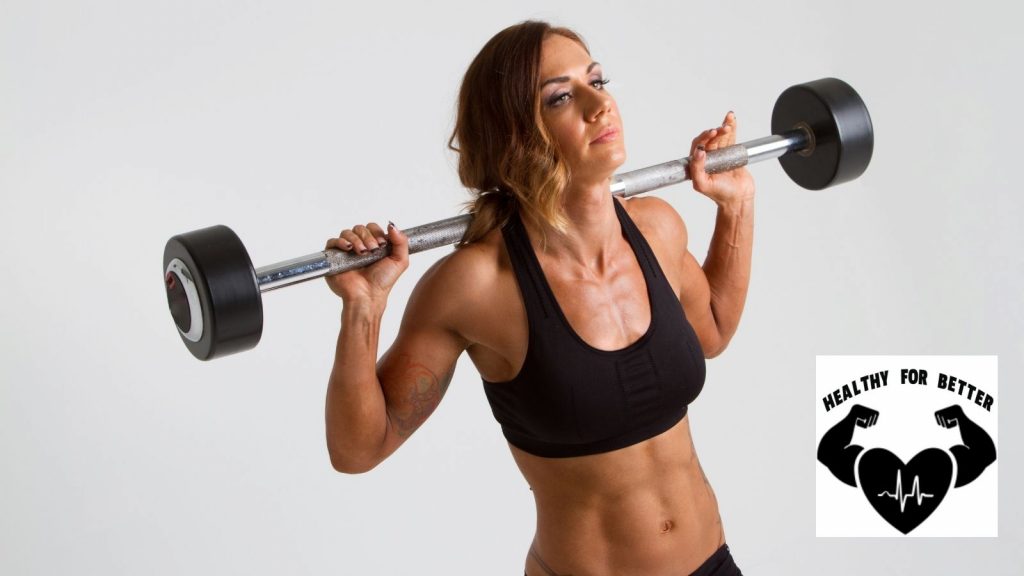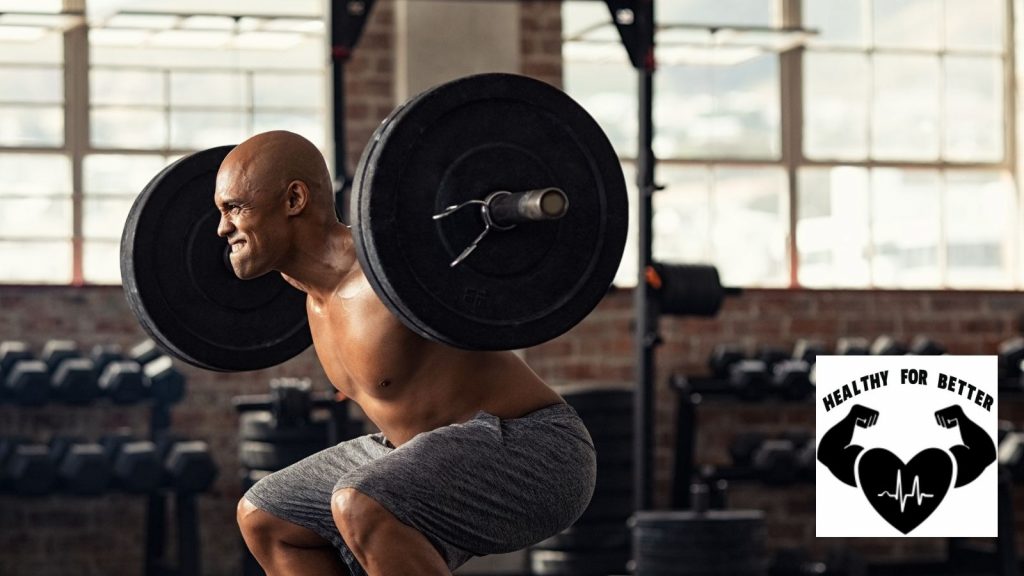How much can you squat? This is a question that many people ask themselves, and for good reason. The squat is one of the most basic and essential exercises that you can do, and it is a great indicator of your overall fitness and strength level. In this article, we will go over the average person's strength standards for the basic squat exercises. We will also help you set an ambitious goal for yourself based on your current ability. Let's get started!
How Much Should I Be Able To Squat?
On average anybody off the street as a male should be able to squat 60-70% of their bodyweight. For a female they should be able to squat around 40-50% of their bodyweight. This is based on a completely untrained person so the more you go up in your experience with weight training the bigger percentage you should be able to lift as you can see below.
These are of course based on a back squat.

How Much Should I Squat For My Weight?
To figure out how much weight you should squat, you'll need to consider your bodyweight and gender. This data may then be used to calculate how much you should be able to squat for each level of strength.
Your first goal should be to be able to squat your bodyweight then go up from there. A suitable squat goal for males is about 150% of their body weight, whereas females should squat about 100% of their body weight.
Remember, these are just general guidelines – you may be able to squat more or less than the numbers listed below, depending on your body composition and experience level.
60-70% of bodyweight for average person
150% of body weight for males as a suitable goal
100% of body weight for females as a suitable goal
Easy ways to increase your squat max quickly without weeks of training are listed below.
- Work on your form: if you can't complete a bodyweight squat (no weights) easily then you aren't going to be able to lift heavy weights until you do. Work on it feet shoulder width apart, head straight, drop down both your feet should stay flat.
- Purchase a belt: If you get a belt on your body will be more stable to perform the squat with increased weight. Practice and don't overuse a belt as it will weaken your back and core.
- Lifting Shoes: yes they make shoes for lifting that will help with your squatting and deadlifting check them out.
These simple tricks can be added quickly and can increase your squat max up 25%+ without putting in weeks and weeks of training.
Below you will see what the average person in each of these categories lifts. Based on what you find here
- Never lifted: 50-70% of your body weight
- Beginner: 110-140% of your body weight
- Intermediate: 150-180% of your body weight
- Advanced: 190-230% of your body weight
- Pro: 240-300% of your body weight
AVERAGE FEMALES SQUAT IN POUNDS
| Bodyweight | Never Lifted | Beginner | Intermediate | Advanced | Pro |
|---|---|---|---|---|---|
| 120 | 59 | 95 | 144 | 204 | 268 |
| 130 | 64 | 103 | 156 | 221 | 290 |
| 140 | 69 | 111 | 168 | 238 | 312 |
| 150 | 74 | 119 | 180 | 255 | 335 |
| 160 | 78 | 126 | 192 | 272 | 357 |
| 170 | 83 | 134 | 204 | 289 | 379 |
| 180 | 88 | 142 | 216 | 306 | 401 |
| 190 | 93 | 150 | 228 | 323 | 424 |
| 200 | 98 | 158 | 240 | 340 | 446 |
| 210 | 103 | 166 | 252 | 357 | 468 |
| 220 | 108 | 174 | 264 | 374 | 491 |
AVERAGE MALES SQUAT IN POUNDS
| Bodyweight | Never Lifted | Beginner | Intermediate | Advanced | Pro |
|---|---|---|---|---|---|
| 120 | 96 | 142 | 192 | 252 | 318 |
| 130 | 104 | 153 | 208 | 273 | 345 |
| 140 | 112 | 165 | 224 | 294 | 371 |
| 150 | 120 | 177 | 240 | 315 | 398 |
| 160 | 128 | 189 | 256 | 336 | 424 |
| 170 | 136 | 201 | 272 | 357 | 451 |
| 180 | 144 | 212 | 288 | 378 | 477 |
| 190 | 152 | 224 | 304 | 399 | 504 |
| 200 | 160 | 236 | 320 | 420 | 530 |
| 210 | 168 | 248 | 336 | 441 | 557 |
| 220 | 176 | 260 | 352 | 462 | 583 |
| 230 | 184 | 271 | 368 | 483 | 610 |
| 240 | 192 | 283 | 384 | 504 | 636 |
| 250 | 200 | 295 | 400 | 525 | 663 |
| 260 | 208 | 307 | 416 | 546 | 689 |
| 270 | 216 | 319 | 432 | 567 | 716 |
| 280 | 224 | 330 | 448 | 588 | 742 |
| 290 | 232 | 342 | 464 | 609 | 769 |
| 300 | 240 | 354 | 480 | 630 | 795 |
What Do These Strength Standards Mean?
Never Lifted – Stronger than 3% of lifters. It even takes a novice lifter at times three to four months of practice before they can pull this exercise correctly and with good form.
Beginner – Stronger than 15% of other lifters out there. A beginner has been training for 6 months or less
Intermediate – Stronger than half of all lifters. An intermediate lifter has trained in the technique for a minimum of 1.5-2 years and is still training hard.
Advanced –More powerful than 80 percent of lifters. An advanced lifter has put in more than five years of effort.
Pro – A stronger than 95 percent of lifters. To be competitive in strength sports, an elite lifter must have spent more than five years training. We call them the 5 percenters. Get here and you are among the elite of the world.

Getting Down To The Squat Basics
Squatting engages the quadriceps and gluteus maximus of the lower body, but it also works other muscles. The squat is one of the most basic exercises, yet using good form is critical to avoiding harm.
Another essential component of a powerlifting squat is to use proper form. This is especially crucial when you begin learning the technique and discover that something isn't working for you. You can even work on your form by doing deep knee bends in the air with your eyes closed (without moving anything else). Second, make use of a spotter not only to help with the weight, but to help maintain your form. You can also videotape yourself so you can see what you're doing wrong and fix it.
Here's a guide to performing the squat correctly:
- Starting with your feet shoulder width apart with knees pointing straight forward and back completely straight. (Some will change this up as they go with knees wider and feet pointing out for now start as stated above).
- Keep your core engaged as you drop down while focusing on keeping your head straight. The most important thing is keeping your feet flat on the floor at all times. Once you master this you can really start to make improvements.
- Drive with your quads and hamstrings keeping back and head straight until you are at the starting position.
The barbell should be rested on the back of your neck/shoulders and supported with both hands (unlike the front squat, where the bar rests on the front of your shoulders).
A safe back squat initial weight for novices is 45 pounds (or simply the bar). You're ready to add weights in 5 or 10 pound increments once you can perform three sets of ten reps with just the bar. Starting with the bar is great get those reps and feeling in of having some weight on your back using the correct form.

Tips To Improve Your Performance When It Comes To Squatting
- Take a few moments each day to do your squat exercises. Experiment with different foot positions and angles, as well as belt use.
- Watch the pillars of squat series which will improve almost anyone squat from novice to advanced: Video Is HERE
- You probably just need to become stronger. There's no magic key that'll make you a greater squatter; all you have to do is keep squatting and you will succeed.
- Don't neglect your core they will improve your squat as well .
- Practice your squat form without weight. This will help you ingrain the correct movement pattern and avoid injury.
- Make use of a spotter to help with the weight, and to maintain your form.
- Videotape yourself so you can see what you're doing wrong and fix it.
- Start with the barbell. This will help you get the reps and feeling of having some weight on your back using correct form.
- Break 90 degrees at the knees. You don't have to go ass to grass, but break 90.
- Keep your upper back tight and flex your abs as well as lower back. Keeping the core tight is very important to avoid back injuries.
- Don't let your knees wobble inwards OR to far outwards. Some people will tell you to shoot your knees out, but they should stay in line with your feet. Shoot the knees out is only applicable advice when your knees bend inwards during a squat.
- Keep your chest up. You should be looking strait ahead with your head.
- Push with your legs, but also slightly pull back with them. It sounds weird, but imagine you're trying to pull the ground towards you. It will help you keep your weight balanced 60/40 on heel-toe.

Increase Squat Tips From The Pros
We didn't want you to only take our word for it when it comes to increasing your max in squat. So we scoured the internet to get actual feedback from experienced lifters that have either had the problem themselves or helped others out with their squat problems. This information was curated from different websites, forums, and reddits.
Pros Opinions
1. Lifter1883 “Pause and Front Squats” – I'm confident with more focus on front squats I could move more weight, also I think my BS max will have gone up but I'm not testing for a while yet.
Pause squats have been great for me because I would often get a bit slack in the hole and get pushed forwards. I'd estimate my max pause BS would be around 160kg right now.
I've also been doing more quad work on machines, which sounds crazy but it's helped to build my VMO and upper quads. Mainly been doing leg extensions but also doing lighter leg presses.
The best thing by far for me though is to just rep the fuck out with high bar, keep your back as upright as possible and actually use your damn legs (big change for me when I started to force my legs to work). Plenty of sets in hypertrophy rep ranges
2. Afferbeck “Focus on mobility issues” – The issues people have with squatting varies wildly between individuals.
I've always had a nightmare of a time with squatting. I started out with that awful lowbar stuff which did more harm than good. Took me years to really discover my true mobility and technical limitations.
The main things that helped me were improving my hip and knee mobility, learning to properly brace the core with the abs and glutes for a more neutral lumbar instead of overextended, and breathing deep into my gut instead of my chest.
Technically, discovering that I sat back so much was a big revelation (thankyou Yasha Kahn Link 1, Link 2), and learning to sit straight down in the squat has been the major technical change. This has required more heel height than my standard Adipowers, about 10mm across the whole heel. I'm 183cm 6′ tall, with pretty even proportions. So lankier people at 6'2 might well need more heel height. Increasing ankle ROM is important, and it is something I have worked at. But I don't think I've really gained much permanent change. A 5 minute ankle stretch before lifting has a big immediate effect though. Oh, another technical/psychological thing for me was learning to squat in a relaxed manner. Moving away from getting everything super cranked on tight and instead of just letting the squat happen without specifically tightening anything, other than getting my core braced and taking a small breath into the gut.
I used to have all kinds of knee pains, and I believe it was from sitting back in all my squatting, and not using my muscles in a balanced manner. Basically sitting down with fairly vertical shins and forcing my body to ‘hinge' everything back up and around the knee joint to stand up. Learning to sit and stand more balanced has let my legs and torso operate more like a spring, instead of a spring with a big kink in the middle. My long term knee pains disappeared. Though my left is starting to get a bit angry with me lately, probably from higher frequency squatting without enough warmup, and with too many inconsistent reps.
That's the main factor in why my squat still sucks. I spend so much time getting into and out of crappy positions during my reps that I make everything twice as hard for myself. When I get a beautifully balanced rep, the weight flies up with zero effort, as it should with the weights I'm currently using. But even though my squat training is specifically based around getting lots of nice smooth consistent reps, too few of them actually meet the mark. So my weakass 80-90kg squats actually require effort instead of feeling like the easy push press or effortless pull such a weight is to me.
I don't really know what my max is, because my squats have always been so poor with lighter weights I've never really had any business trying to squat heavier. I deliberately back squatted an easy 5kg PR of 120kg on new year's day to kick things off right. It felt very easy and was pain free. So my squat training is working. My goals for the year are to cut to 85kg and to squat 140kg. I feel like either one of those is very achievable, but doing both will be tougher considering I currently weigh a very fat 110kg.
If you have lower back issues, you should rest it, depending on severity. There are numerous ways to injure your lumbar and I think I've done them all. But since learning to use my core properly, my back has felt great. Learning to do this was a big help and I couldn't believe how I was in so much overextension all the time. This may aggrivate your lumbar pain further though, so be careful.
3. BraveryDave “Surpisingly focus on your hands” – The things that helped me both have to do with my hands. On the back squat, I had a very narrow grip on the bar. Moving it out so the outsides of my hands touch the rings just made it feel a whole lot better. On the front squat, I always had problems keeping my chest and elbows up on heavy reps. I started trying to push the bar up with my hands on the way back up and somehow this keeps everything tight and keeps me in the correct positions.
4. CharacterStrength19 –
1: Use glutes and core properly to avoid hyperextending in squats
2: Belt squats and hack squat machine are great for quad strength development whilst back squats are off the menu
3: Hamstring curls make your knees feel better
Hope some of that's useful 🙂

Final Thoughts
The average person can squat between 50-70% of their bodyweight, depending on their experience level. You can increase your squat max quickly by using some simple tricks, such as practicing with proper form, using a belt and lifting shoes, and increasing the weight you start with. These guidelines will help you get started on your way to becoming a powerlifting champion!

